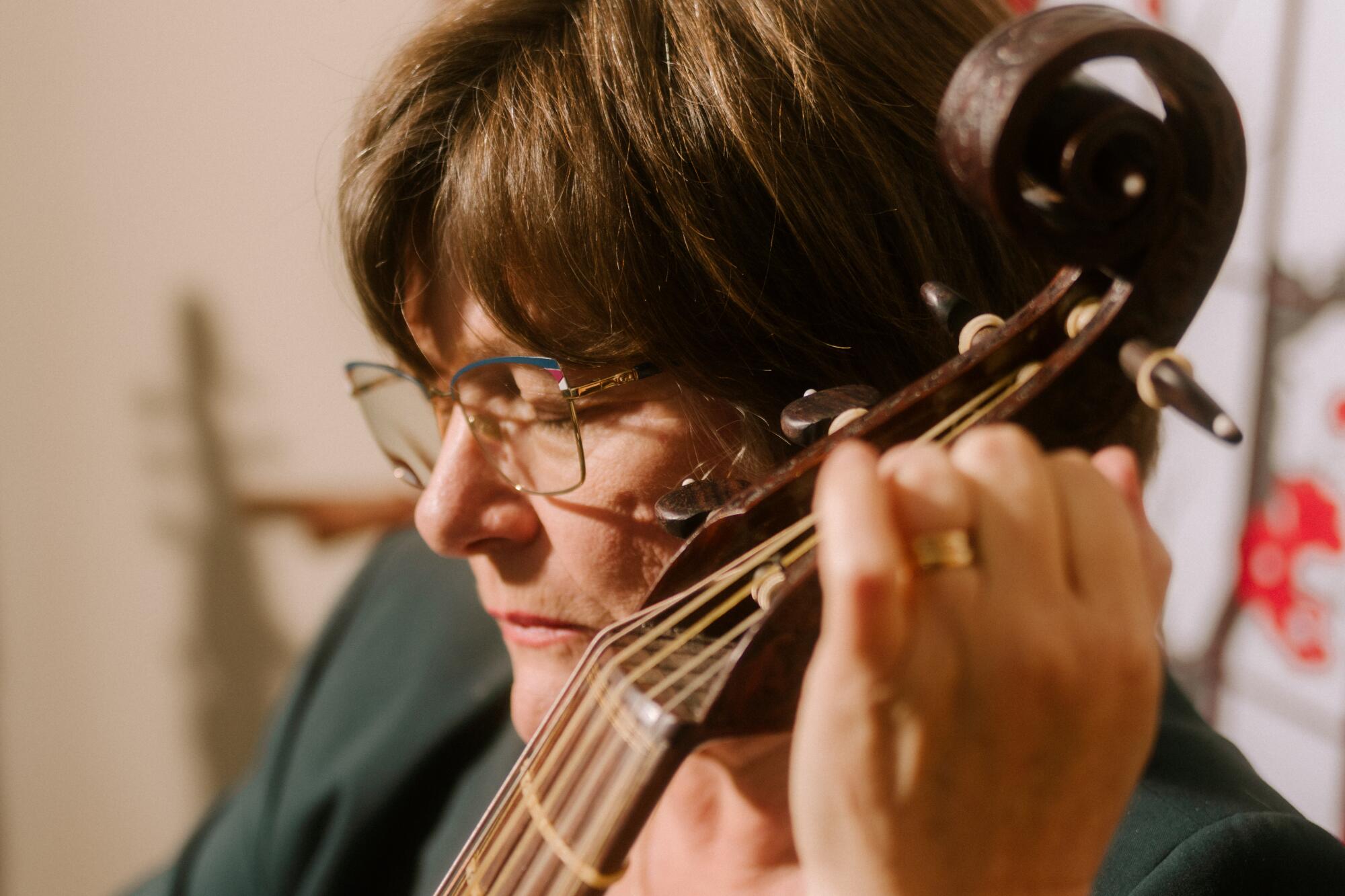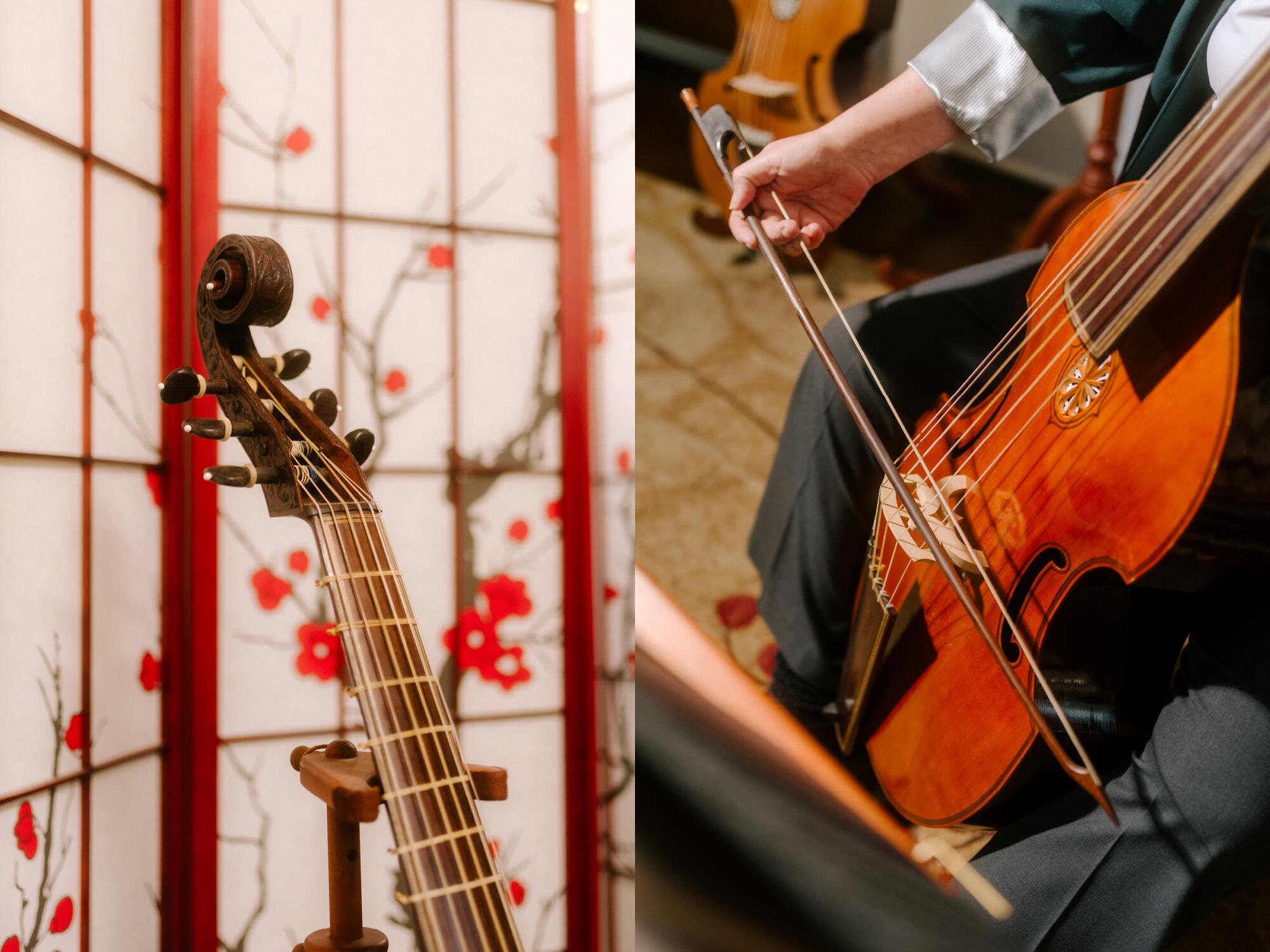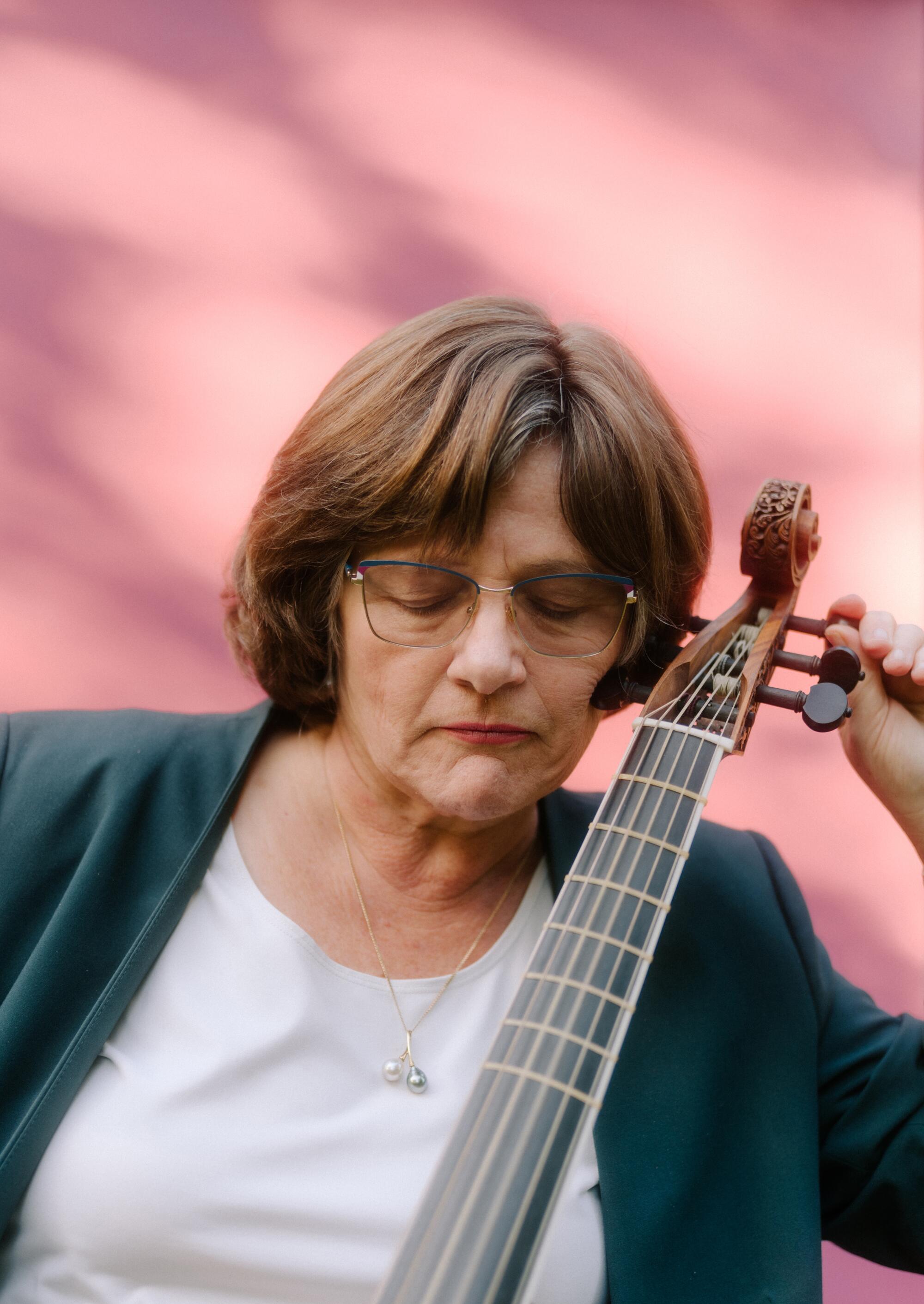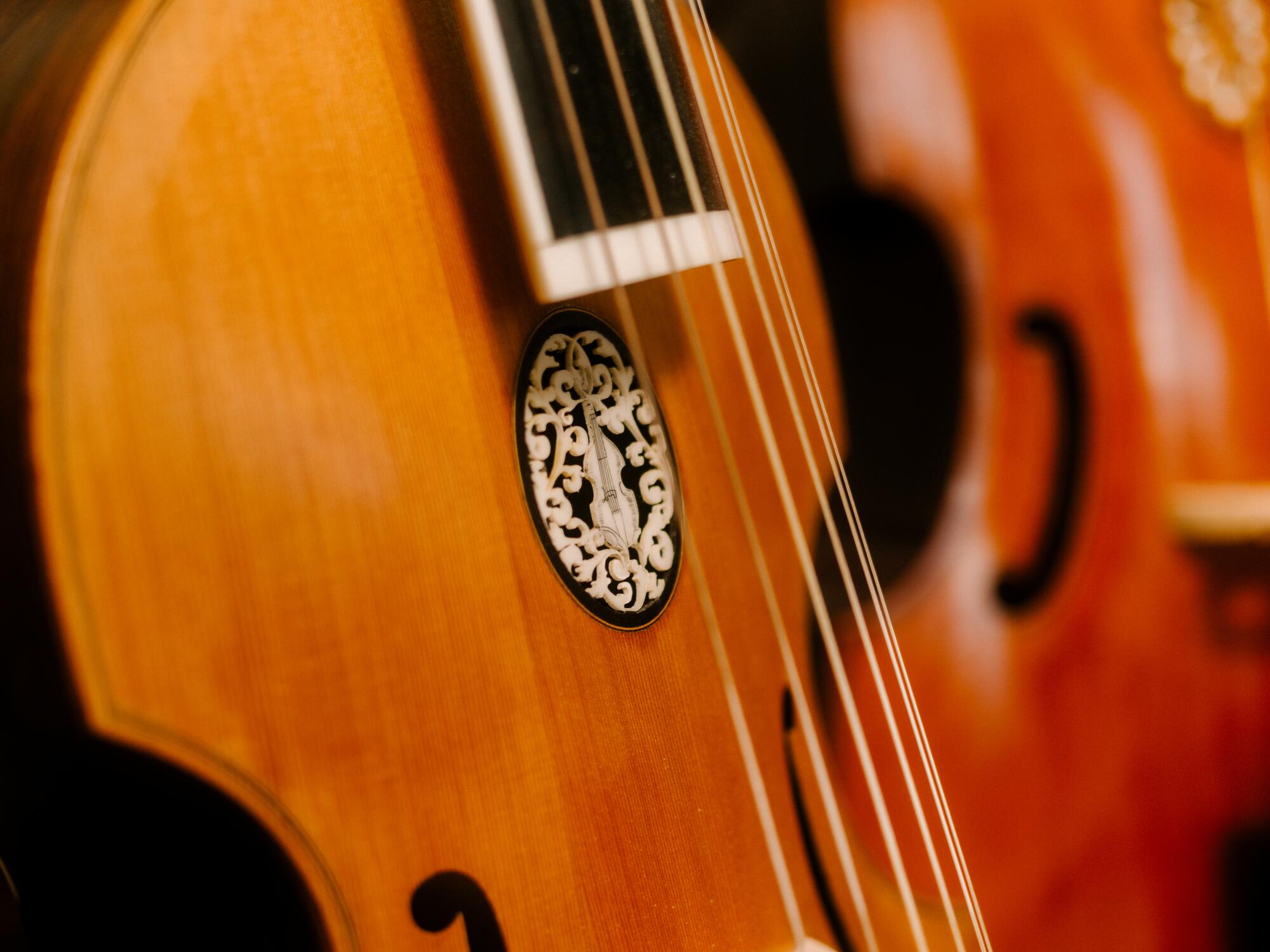
I have been trying for years to write todayâs story, but it was begging to be told with sound.
So for Column One, the Timesâ signature series in creative storytelling, Iâm switching it up today: My Column One for you is an episode of âThe Timesâ podcast.
Spoiler alert: It features Lucy Jones, Southern Californiaâs earthquake expert extraordinaire. But youâll be getting to know a different side of her â a side that Iâve come to admire and appreciate since she retired from the U.S. Geological Survey in 2016.
Jones, as it turns out, is also a talented musician. Particularly in Renaissance and Baroque music. Sheâs quite skilled at the viola da gamba, a cello-like instrument, and for years, she has been thinking about how music could foster deeper awareness about the record-breaking wildfires, our unprecedented water shortages and the floods and storms that have shocked the world as we know it, time and time again.
âI quickly came to realize that whatâs coming with climate change is so large that it dwarfs what earthquakes will do to us,â she told me. âAnd I cannot justify pushing seismic safety issues if we arenât going to deal with climate change.â

To that end, Jones has been trying her hand at climate change communication, but with a twist. Through a project called Tempo: Music for Climate Action, she has brought together a remarkable group of scientists, psychologists and composers to figure out how to write music that would break through the fears and human instincts usually stopping us from thinking about the future of our planet. Can the right harmonies and lyrics inspire more people to care?
Now before you roll your eyes, think about it: A scary movie feels less scary if you turn the sound off. You respond to a fire alarm differently if itâs wailing, rather than just flashing silently as a red light. What we hear can really affect our emotions and actions. But to be clear, the music in todayâs episode is not scary. As psychology expert Sarah Dryhurst explains, fear is what actually shuts people down.
âAs much as we need to feel a sense of threat in order to act ⌠we also need other things to go alongside that,â said Dryhurst, a senior research fellow at the Institute for Risk and Disaster Reduction at University College London. âWe need to feel, crucially, a sense of hope ... and music is a real gateway to that experience of hope â especially because itâs so collective and participatory, it can give us that collective sense of, âWe can do something together.ââ
Indeed, can one imagine the civil rights movement without âBlowinâ in the Windâ and âWe Shall Overcomeâ?

Science has documented the effects of music. When we listen to music together, our heartbeats actually start to align and we start breathing together to the lyrics. Even our brain waves start to synchronize, according to Makiko Hirata, an international concert pianist who works with neuroscientists to quantify the benefits of music on our well-being.
Hirata also sees the collective experience of music as a possible antidote to the short-sighted â and often selfish â tendencies that prevent us from seeing the bigger climate picture.
âWhat would help us,â she said, âis to reframe climate change as a symptom to ⌠a bigger underlying problem of apathy and disconnect â and music reminds us that this individualism is what has led us here.â
This is where Jonesâ viola da gamba comes in. In todayâs episode, she walks us through a piece she composed in Renaissance style (yes, you get to hear her play), with rising pitches corresponding to rising temperatures.
Weâll also hear from Shawn Kirchner, a renowned choral composer and longtime member of the Los Angeles Master Chorale, who reflects on the power of call-and-response â and how singing an anthem together can transform the way we emotionally connect to an issue.

Column One will continue its usual text-and-photo (and often video) format, but for now, please give this one a listen. I donât want to give too much away, so Iâll leave you with one more thought from Hirata, who has been working with Jones on the Tempo project from the very beginning:
âJoy must be present when weâre talking about climate because it needs to be sustainable. Joy is what gives us hope. Joy is what gives us the reason to live and get up and move and do things. And music â what else is music but joy?â
More to Read
About The Times Podcast
About this episode









